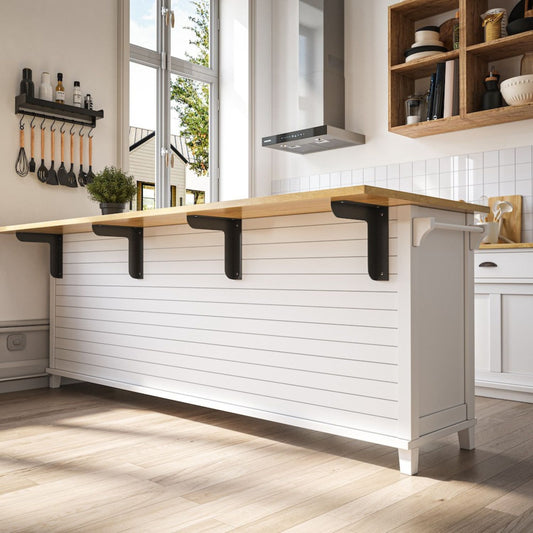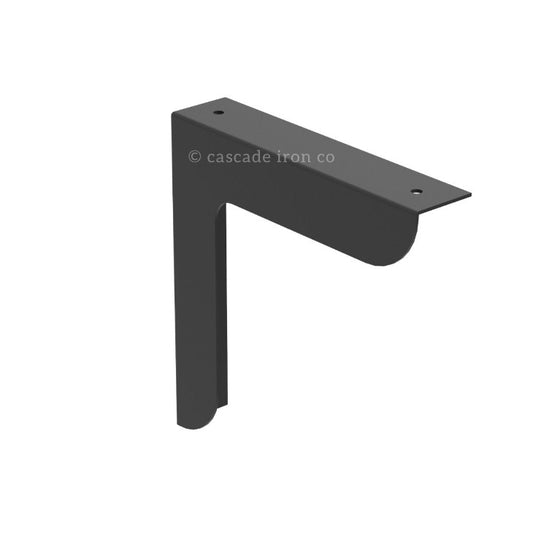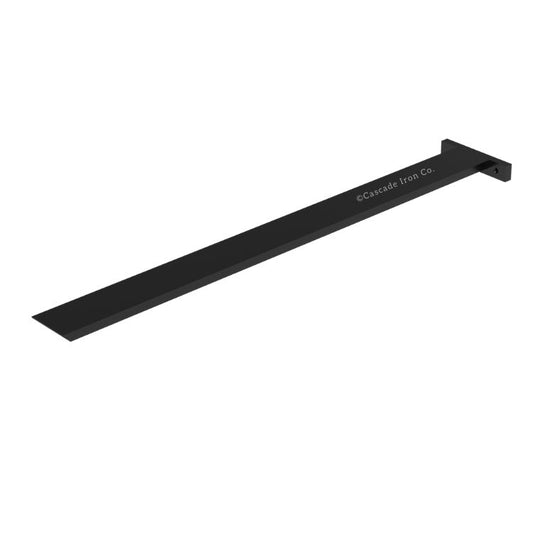When installing countertops with overhangs - whether for kitchen islands, breakfast bars, or workspaces, the right support is key to a secure top. The two most popular options for supporting countertop overhangs are hidden brackets and traditional corbels.
Each option has its strengths, and knowing when to use one over the other can make a big difference in both the look and functionality of your space.
Here’s a breakdown to help you decide when to go with hidden countertop brackets and when regular overhang corbels are the better choice.
Hidden Countertop Brackets: Sleek and Modern Support
If you’re aiming for a clean, minimalist look with your countertop, hidden brackets are the way to go. These brackets are installed underneath the countertop, making them invisible to the eye. This gives the countertop the appearance of “floating” without any visible supports, which works perfectly for modern or sleek kitchen designs.
Hidden brackets are also incredibly strong and can support significant weight, as long as they’re properly installed.
They’re mounted into the cabinet or wall studs, providing sturdy support without taking up any extra space. This is especially handy for kitchen islands or bars where you want extra legroom and an open feel.
One challenge for this type is that it requires installation before the countertops are installed. This makes them a good upgrade for remodels.
When to use them:
- In modern or minimalist designs where you want a seamless look.
- When you need strong support but don’t want visible brackets or corbels.
- For kitchen islands or bars where you want plenty of knee and leg space underneath the countertop.
Regular Overhang Corbels: Traditional and Decorative Support
Corbel brackets are a more traditional way of supporting countertop overhangs. These brackets are visible and come in a wide range of styles. Corbels are a great option if you’re going for a more classic, farmhouse, or industrial look where visible elements can enhance the overall design.
Corbels also provide excellent support for heavy countertops. While they take up more space than hidden brackets, they can add a decorative touch to your kitchen.
Additionally, they are great option when extra support is needed after the countertop is already installed.
When to use them:
- In traditional, rustic, or farmhouse-style kitchens where you want visible, decorative supports.
- When you need to support heavy countertops with larger overhangs.
- If you want to add a design feature that complements the overall style of your kitchen.
Which One Is Right for Your Project?
Both hidden countertop brackets and regular overhang corbels provide strong, reliable support, but the choice comes down to style and function.
- Go with hidden brackets if you want a clean, modern look with uninterrupted legroom beneath your countertop. They offer a sleek, minimalist aesthetic while still providing the strength you need for everyday use.
- Opt for corbels if you’re leaning into a more decorative, traditional style. Corbels not only hold up the countertop but also enhance the overall design of your kitchen with their visible, often ornate appearance.
The Bottom Line
Whether you choose hidden countertop brackets or regular overhang corbels, the right support is a small upgrade that can have a big impact on both the look and function of your space.
Hidden brackets deliver a modern, open feel, while corbels offer decorative charm and classic style. Ultimately, the choice depends on the aesthetic you’re going for and the practical needs of your kitchen.










